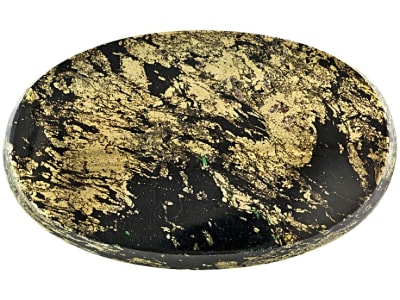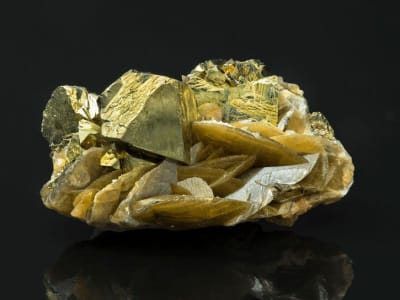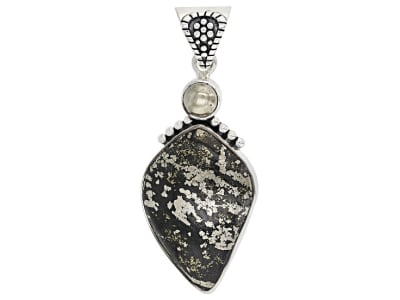Chalcopyrite is a major source of copper ore. It has been mined for thousands of years and the best ore is found in hydrothermal deposits. It has a metallic luster resembling gold, but it can be separated from gold and pyrite by its streak and mohs hardness. It often forms as euhedral crystals or druse. Mineral specimens show parallel lines or striations on crystal surfaces or cleavage faces. Specimens can be twinned. Chalcopyrite tarnishes upon weathering and turns to a dull gray green color. Tarnished specimens are often treated with acid to produce blue to purple, with hits of red iridescence. These treated specimens are sometimes sold under the misnomer "peacock ore". The name “peacock ore” should only be used to describe bornite. Specimens are prized by collectors and are found in Colorado and Arizona in the Unites States, as well as England, Tasmania, Germany, Canada, Spain, Japan, and China. It becomes magnetic after heating.
General Information
LWUV: Inert
Chalcopyrite Colors
-
 Blue
Blue -
 Purple
Purple -
 Yellow
Yellow
Alternate Names
Copper Pyrite, Apache Gold
Countries of Origin
Russian Federation; Romania; Republic of Kosovo; United States of America; Kazakhstan; United Kingdom of Great Britain and Northern Ireland; Bolivia (Plurinational State of); Spain; Canada; Unknown; China; Ireland; Italy; Mexico; Australia; France; Peru; Germany
History
Named in 1725 by Johann Friedrich Henckel for the Greek khalkos meaning "copper," and "pyrite," which translates to strike fire.
Care
Chalcopyrite is brittle and relatively soft so please take care when handling. The mineral is also prone to tarnish.


